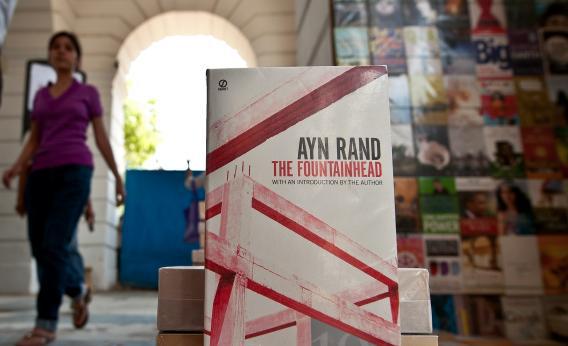Jane Mayer beat everybody to the punch this weekend with a taut explainer of Paul Ryan’s once-loud, now-denied admiration for Ayn Rand. Recently, she wrote, “Ryan distanced himself from Rand, whose atheism is something of a philosophical wedge issue on the right, dividing religious conservatives from free-market libertarians.” And that has been a strange spectacle. Who denies all of a writer’s works because some of those works are girded by atheism? Up to 2011 or so, Ryan never had a problem with this. Now, he can no more denounce Rand than he can denounce his own white grandmother.
Still, now that Ryan claims he’s more of a Thomas Aquinas guy than a Randian, it pays to understand what he took from the late Russian-American objectivist. The Rosetta Stone of Ryan-Randianism is his 2005 speech to the Rand revivalist Atlas Society, made when Ryan was in his fourth term and his Republicans were clearly losing their grip on power. He makes a few references that only compute if you’ve read Atlas Shrugged.
I always go back to, you know, Francisco d’Anconia’s speech, at Bill Taggart’s wedding, on money when I think about monetary policy. Then I go to the 64-page John Galt speech, you know, on the radio at the end, and go back to a lot of other things that she did, to try and make sure that I can check my premises.
The Galt speech is fairly famous, but the d’Anconia speech is more obscure. So: In the novel, Francisco Domingo Carlos Andres Sebastian d’Anconia is the heir to a copper mining fortune who slowly dismantles it by purposefully giving in to the demands of “looters.” He admits this to Dagny Taggart, the heroine (and his former love), fairly early on. He spent $8 million, for example, on a “housing settlement” that the Mexican government demanded he build at one of the mines. It’ll all fall apart soon, he admits, except for the miners’ new church – “they’ll need it,” he says contemptuously. “Whether I did it on purpose, or through neglect, or through stupidity, don’t you understand that that doesn’t make any difference? The same element was missing.”
In early chapters, d’Anconia pretends to be a Bruce Wayne-esque reckless playboy. He occasionally slips, because he’s a Rand character. Thus, “Bill Taggart’s wedding speech,” when d’Anconia goes to the party of a businessman using state connections to make money. A left-wing magazine writer tells him that “money is the root of all evil.” That sets off d’Anconia, who launches rant about money that runs to 23 paragraphs. “When you accept money in payment for your effort,” he says, “you do so only on the conviction that you will exchange it for the product of the effort of others. It is not the moochers or the looters who give value to money. Not an ocean of tears nor all the guns in the world can transform those pieces of paper in your wallet into the bread you will need to survive tomorrow. Those pieces of paper, which should have been gold, are a token of honor – your claim upon the energy of the men who produce.”
The problem, says d’Anconia, is that statists – looters and moochers – see dollar signs and think they can, must redistribute them. “Whenever destroyers appear among men,” he says, “they start by destroying money, for money is men’s protection and the base of a moral existence. Destroyers seize gold and leave to its owners a counterfeit pile of paper. This kills all objective standards and delivers men into the arbitrary power of an arbitrary setter of values. Gold was an objective value, an equivalent of wealth produced. Paper is a mortgage on wealth that does not exist, backed by a gun aimed at those who are expected to produce it. Paper is a check drawn by legal looters upon an account which is not theirs: upon the virtue of the victims. Watch for the day when it becomes, marked: ‘Account overdrawn.’”
Now, take all of that and apply it to our current debates about the Federal Reserve. Since the Nixon years, the dollar has been de-linked from the price of gold. The Federal Reserve can print money and use it to buy up government bonds – which it has recently, in several rounds of Quantitative Easing. It does this because Congress gave the Fed a dual mandate to fight inflation and to reduce unemployment. Creating “free” money helps with that latter goal. I hope it doesn’t surprise you that Ryan, since at least 2008, has wanted the Fed to abandon the employment madate. He doesn’t say this in a stupid way, like Rick Perry. He says it by citing Ayn Rand.
